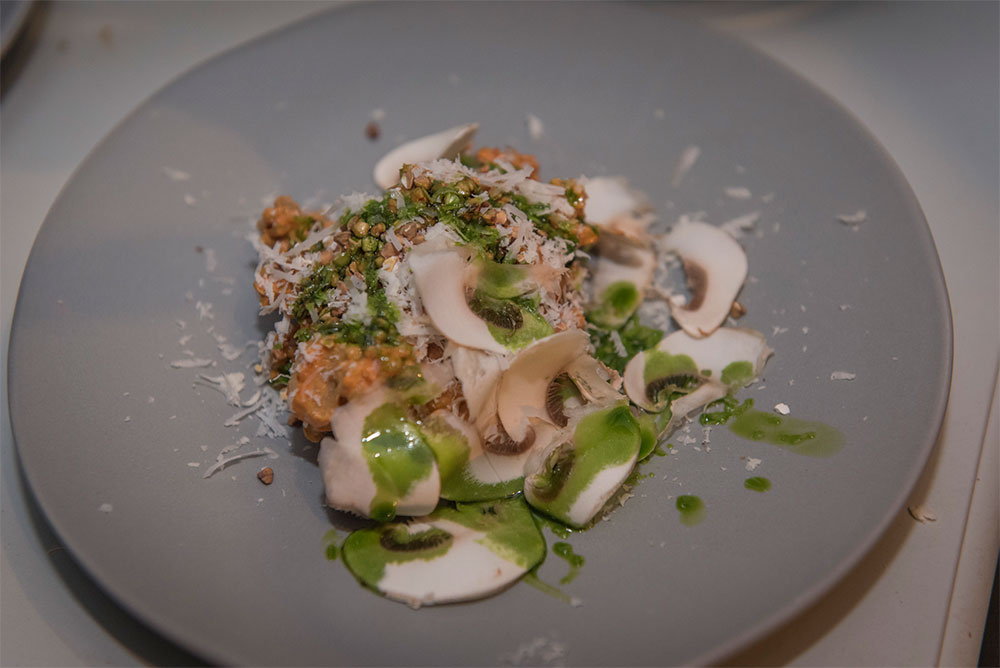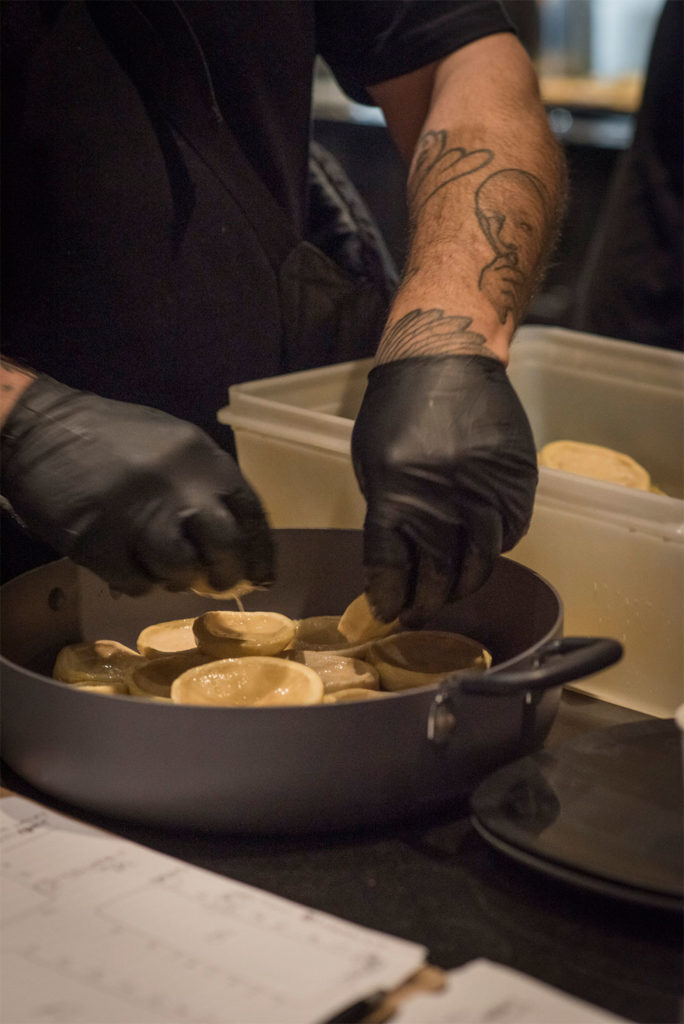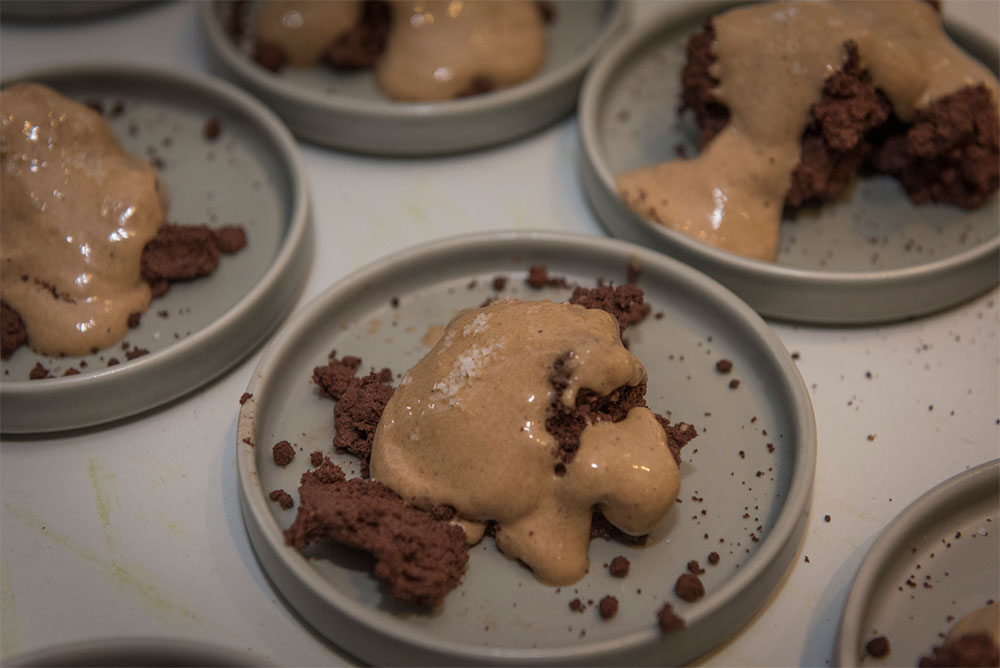
Cooking with cannabis doesn’t have to be about getting high–but, it sure doesn’t take away from the experience. If you’re looking for a way to enjoy the effects of weed without the smoke, learning how to cook with cannabis is a creative alternative.
Whether you’re baking brownies or dishing out a full-course weed infused dinner, the process of cooking with cannabis can be a ton of fun. To get started, all you need is a recipe, the ingredients, and–of course–a little green.
Understanding cannabis and its effects on cooking
You can add cannabis to almost any recipe as long as it has some kind of fat like butter or oil. Depending on what you’re cooking, there is a lot to consider in terms of how using cannabis will impact the outcome.
Strain selection is one of the most important factors for reasons of taste, texture, and effect. Depending on the type of dish you’re cooking, choose a strain that matches the flavor profile of what you’re cooking.
Additionally, cannabis can impact the texture of your dish. If you’re using oil when the recipe calls for butter or vis versa, this will impact the final product. Cooking with cannabis takes practice, so don’t get discouraged if you find your first attempt isn’t perfect.
Different methods of infusing cannabis into food
Your method of infusion will greatly impact your final product in terms of taste, texture, and potency. There are several methods of infusion that can work depending on your recipe.
Sugars and honey
Using cannabis-infused honey or sugar is a great way to infuse desserts or small dishes with cannabis. Use it as the primary sugar in cupcakes or put a little sugar in your morning coffee.
Infused oil or butter
THC is a fat-soluble molecule. This means that when cooking with cannabis, using THC-infused butter or oils is going to make your edibles stronger and faster acting. Most cannabis-infused recipes call for this type of infusion.
Tincture
A tincture is a concentrated liquid form of cannabis that is made from steeping cannabis flowers in high-proof alcohol (think Everclear). Tinctures can be added to drinks or sprinkled on food. Infusing with tinctures is a great way to get precise dosing and minimize a dank taste.
Extraction Methods for cannabis cuisine
When it comes to infusing cannabis into food, there are several ways you can do this. For creating traditional cannabutter or oil here are the steps you’ll need to take.
Decarboxylation
Decarboxylation is the process of heating flower to convert THCA and CBDA into their active forms of THC and CBD. If you skip the decarbing process, you may wonder why your edibles didn’t work.
You’ll need:
Baking sheet
Parchment paper or tin foil
Cannabis (cleaned of seeds and stems)
Instructions:
- Preheat your oven to 225°F
- Separate the flower into small pieces, do not use your grinder
- Line the baking tray with parchment paper
- Spread the cannabis onto the baking tray in a single layer with little space between each piece
- Bake the cannabis for 45 minutes, keeping an eye on it to ensure it’s not getting excessively burnt.
- Once complete, remove the tray and allow it to cool
- Store in a sealed and labeled container

Oil or butter infusion
Remember how we talked about THC binding to fats? Oil and butter are optimal carriers for THC. Creating an infusion is easy but will require that you decarb your flower first.
When measuring dosage, it’s a good idea to infuse 10 grams of flower for every cup of butter. This makes the math easier and ensures dosage accuracy. For example:
- 1 gram of 20% THC cannabis will contain 200mg of THC. So, if you put 10g in one cup of butter, you’ll have a potency of 2,000mg THC per cup of butter.
- If you use one cup of butter in your recipe, divide the number of portions made by 2,000 and you’ll have your dosage.
To begin, you’ll need:
Decarboxylated cannabis
Butter or oil
¼ cup water (cannabutter only)
Saucepan
Thermometer
Cheesecloth
Instructions for Cannabutter
- Melt your butter over low heat
- Once melted, add water and decarbed flower
- Simmer for two to three hours, keeping a close eye on the butter. You want to make sure the temperature never goes above 190°F
- Remove from heat and let cool but do not let solidify
- Using a cheesecloth, strain your cannabutter into a sealable container. You may need to do this more than once to ensure you’ve removed all the flowers.
- Label and date your butter and allow it to cool in the fridge
Instructions for creating Cannaoil
- Place oil and decarbed flower into your saucepan
- Turn the heat on low and cook for around 3 hours
- Remove from heat and let cool. If you are using an oil that solidifies at room temperature (i.e. coconut oil) be sure that you don’t let the oil solidify completely.
- Strain through cheesecloth into a sealable container
- Label and date your oil and place it in the fridge.
Ingredients to enhance the flavor and effects of cannabis
As you continue to experiment with strains and ingredients, you’ll find that cooking with cannabis opens a whole world of flavor potential. By adding certain ingredients like chocolate, spices, or fruit you can influence both the effects and the taste of your edibles.
- Chocolate: if you want to mask the flavor of the weed, chocolate is your best friend. Additionally, using chocolate with a high-fat content, like milk or white chocolate, can increase the potency of your edibles.
- Herbs: Think garlic, onion, and cinnamon. Anything with a strong flavor will add depth to the dish.
- Fats: The higher the fat content of your recipe, the more potent and fast acting it will be. If you want to create edibles with a less distinct weed taste, use cannabutter or cannaoil’s with a higher concentration of THC. This way you can use less cannabis-flavored butter without sacrificing potency.

Cannabis-infused appetizers
Thin Mint Girl Scout Cookie, Peppermint Kush, Platinum Girl Scout Cookie
These strains are refreshing with notes of peppermint. The light flavor profile is perfect for kicking off the dinner party.
- Bruschetta
- Fresh Fruit Skewers
- Cucumber bites
Pineapple Chunk, G13, Super Silver Haze
These strains of weed have a flavor that is often described as woody or piny. Because they are pungent, they can be a great addition to elevating an appetizer.
- Meatballs
- Savory Cheese dip
- Bacon-wrapped dates
Cannabis-infused entrees
Afghan Kush, GSC, and Bubba Kush
Entrees are generally heavier and richer. Choosing one of these strains adds notes of earthiness to any pasta or stew dish.
- Slow-cooked stews
- meaty pasta dishes
- Roasted Vegetables
White Widow, Jack Herer, Northern Lights
These strains have a spicy flavor profile and can be a delightful twist to any dish that calls for a little kick.
- Thai curry
- Szechuan beef
- Pasta Bolognese
Cannabis-infused desserts
Sour Diesel, OG Kush, Chemdawg
Diesel may not be your first thought when it comes to flavor profiles you’d want in your dessert; however, these tangy profiles can work to brighten up a tart dessert.
- Lemon Bars
- Grapefruit granita
- Key Lime Pie
Lemon Haze, Tangie, Orange Crush
These citrusy, sweet strains are uplifting and energizing. They work well if you are looking for a way to lighten up a rich dessert.
- Cheesecake
- Lemon cupcakes
- Chocolate truffles
Tips for dosing and safety considerations when cooking with cannabis
We all know the story. Your friend offers you a homemade edible brownie. You eat half and the next thing you know you’re exploring the astroplane from your friend’s couch.
All of this to say: Dosing matters. Here are a few tips to help you hit the mark when cooking with cannabis:
- Start small, you can always add more
- Use a calculator to determine dosage per serving.
- Use a thermometer to avoid overheating your cannabis. This will cause it to lose potency
- Use quality cannabis. The quality, percent THC and percent CBD will impact the potency of your edibles
- Stir it well to ensure that each serving contains a consistent amount
- Label your edibles. You don’t want anyone (especially kids) accidentally getting high because they thought those were normal cookies on your counter
Jake from Cannabis Sensei finds it imperative that “If you have kids or pets, it’s incredibly important to label your edibles and the dosage to prevent any mix-ups or overconsumption. In that same vein, be sure to clean your utensils thoroughly to prevent cross-contamination.”
Expert insights and advice for cooking with cannabis
Cooking with cannabis can be difficult. But, like all things, practice makes perfect. Follow these tips when cooking with cannabis to help you achieve your desired effect on the first try.
Using too high a temperature
Don’t let your cannabis hang out above 365°F as that can degrade the THC and render it inactive. Having a thermometer on hand and staying in the safe zone of 340°F can help prevent this costly mistake.
Add your butter or oil last
In the same vein, don’t start cooking with your cannabutter or oil until the end. The high temperatures required to sautee veggies can strip the THC. Instead, add it at the end when you’re almost finished cooking.
Always mix thoroughly
Accuracy is important to enjoy what you’re cooking. It can also become a safety hazard. Ensure that you’re mixing all of your ingredients well to distribute the THC evenly.



